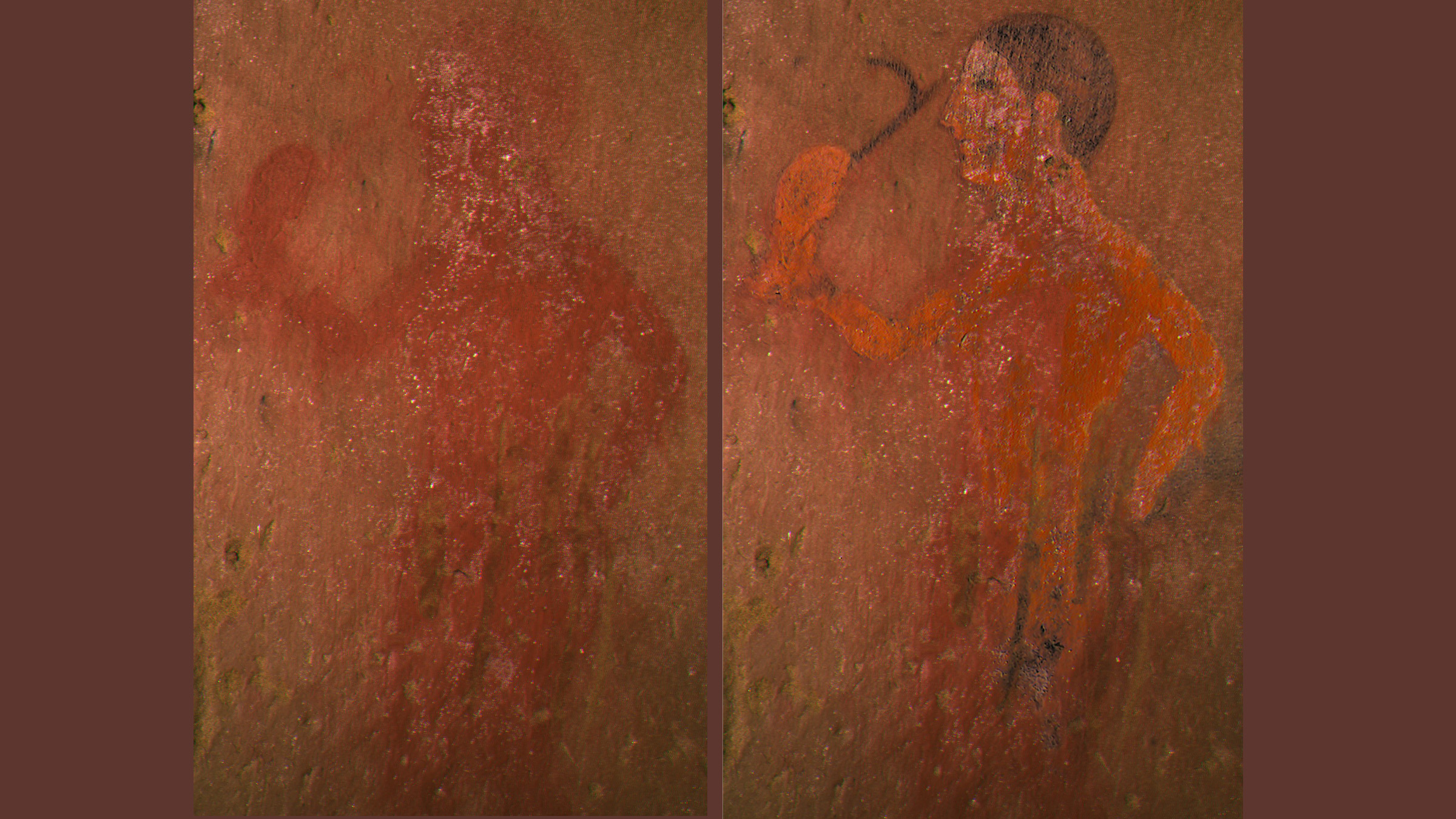Hidden scenes in ancient Etruscan paintings revealed

Scientists using a new technique have uncovered the colorful and once-hidden scenes in paintings of the ancient Etruscans, a group of people who flourished on the Italian peninsula around 2,500 years ago at a time before Rome became powerful.
For instance, they found new details in a painting from the "Tomb of the Monkey" and scenes of an underworld in another work of art.
The Etruscans created detailed paintings, but the passage of time has meant that many of them are now only partly visible and that much of their color has been lost.
Related: 7 bizarre ancient cultures that history forgot
"A major issue is the significant loss of information on the polychromy [colors] of the preserved paintings, with special regard to some specific colors owing to their physical chemical composition," Gloria Adinolfi, a researcher at Pegaso Srl Archeologia Arte Archeometria (a research institute), said in a presentation given Jan. 8 at the virtual joint annual meeting of the Archaeological Institute of America and the Society for Classical Studies.
The fact that some colors survive the passage of time better than others can give a distorted view of what ancient paintings looked like at the time they were painted, Adinolfi said. For example, some shades of green tend not to survive well, whereas red often does, she said. "Red oaks usually seem to be more resistant so that sometimes reds are dominant and alter the correct perception of the original polychromy of the pictorial decoration," Adinolfi said.
Revealing ancient paintings
To reveal the paintings, the scientists used a technique called multi-illumination hyperspectral extraction (MHX), which involves taking dozens of images in the visible, infrared and ultraviolet bands of light and processing them using statistical algorithms developed at the National Research Council of Italy in Pisa, said team member Vincenzo Palleschi, a senior researcher at the research council.
Sign up for the Live Science daily newsletter now
Get the world’s most fascinating discoveries delivered straight to your inbox.
The technique can detect Egyptian blue, a color developed in ancient Egypt that "has a very specific response in a single spectral band," Palleschi said. The team also analyzed the residual remains of other remaining colors to help determine what colors were in the painting.
By combining the MHX and color analyses, the team revealed vanished scenes from ancient Etruscan paintings. The researchers unveiled several examples during the presentation, including details of paintings depicting the Etruscan underworld showing rocks, trees and water.
In the Tomb of the Monkey, so named because a painting in the tomb shows a monkey on a tree, the researchers uncovered details of a painting depicting a person. To the naked eye, the painting looks like a red blur, but after the MHX and color analyses were complete, the painting clearly showed a person carrying an object and details of their hair and face. The tomb was discovered in the 19th century but now, with the new technology, the painting has become much more visible.
The team's research is ongoing, and more paintings may be revealed in the future.
Originally published on Live Science.

Owen Jarus is a regular contributor to Live Science who writes about archaeology and humans' past. He has also written for The Independent (UK), The Canadian Press (CP) and The Associated Press (AP), among others. Owen has a bachelor of arts degree from the University of Toronto and a journalism degree from Ryerson University.









